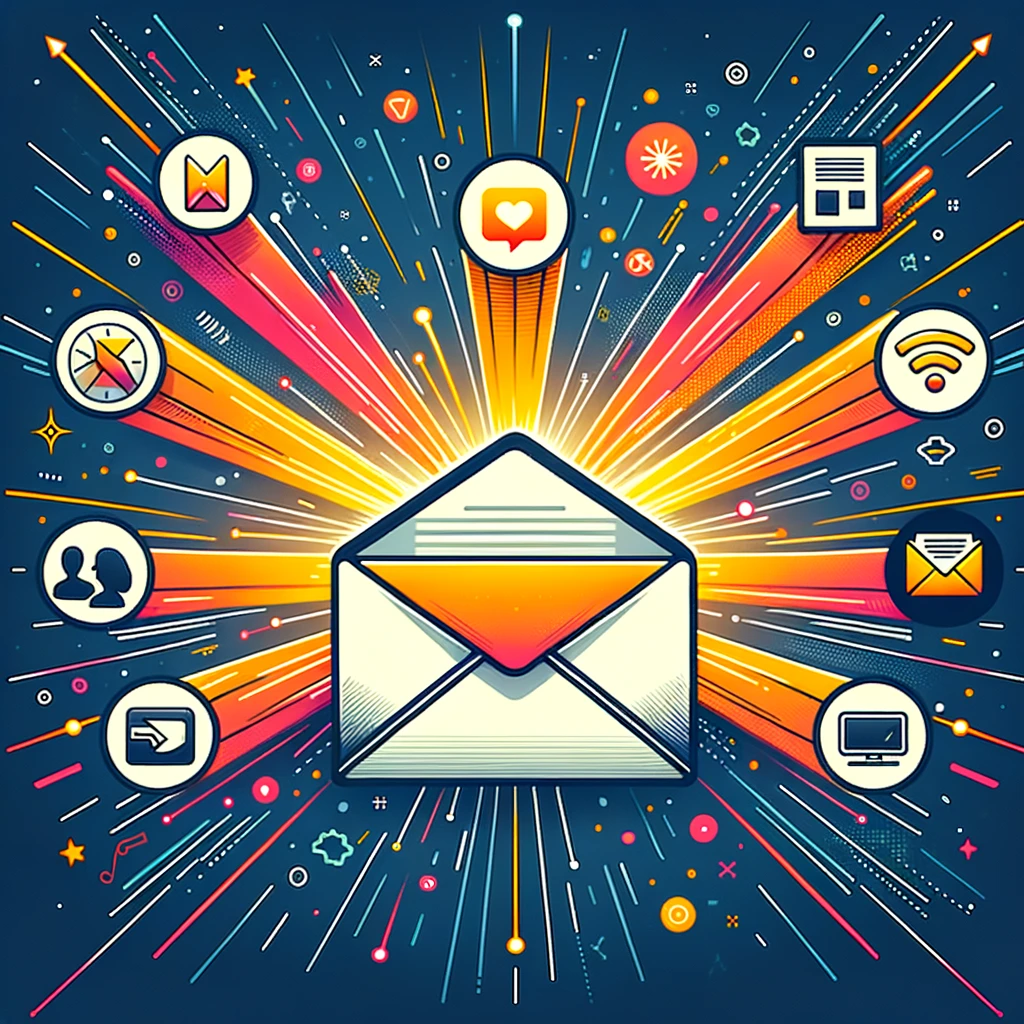
Anatomy of a High-Conversion Email
Email marketing has become a vital tool for businesses in today’s digital landscape. With millions of emails being sent and received every day, it’s crucial for marketers to understand the anatomy of a high-conversion email. Crafting the perfect subject line, engaging copy, a compelling call to action, eye-catching design, personalization tactics, A/B testing, optimizing delivery schedule, and applying learnings to future emails can significantly impact the success of your email marketing campaigns. In this article, we will explore each aspect in detail and provide actionable tips to help you achieve outstanding results with your email campaigns.
Crafting the Perfect Subject Line
When it comes to email campaigns, your subject line acts as the first point of contact with your audience. A compelling subject line captures attention and entices recipients to open your email. It is the gateway to your message, the key that unlocks the door to your content. To craft the perfect subject line, consider these best practices:
First and foremost, keep it concise and to the point. In a world where people are bombarded with information, brevity is key. A subject line that is too long may get cut off, leaving your audience guessing about the rest of your message. Aim for a subject line that is clear and succinct, giving your readers a glimpse of what’s inside without overwhelming them.
Another effective technique is to include action verbs or power words. These words have a way of grabbing attention and inspiring action. They create a sense of excitement and urgency, compelling your audience to take notice. Words like “discover,” “unveil,” “transform,” and “revolutionize” can add a punch to your subject line and make it more enticing.
Creating a sense of urgency or exclusivity can also be a powerful tool in crafting subject lines that get noticed. People are more likely to open an email if they feel they might miss out on something valuable or time-sensitive. Using phrases like “limited time offer,” “exclusive invitation,” or “don’t miss out” can create a sense of FOMO (fear of missing out) and prompt your audience to take action.
Personalization is another key element to consider when crafting subject lines. People are more likely to open an email if it feels tailored to their needs and interests. By using their name or referencing their previous interactions with your brand, you can make your subject line feel more personal and relevant. Personalization shows that you value your audience and understand their individual preferences.
Lastly, it’s important to avoid using spam trigger words. These are words or phrases that can trigger spam filters and cause your email to end up in the dreaded spam folder. Words like “free,” “guaranteed,” “earn money,” and “urgent” are commonly flagged by spam filters. While it’s important to make your subject line compelling, it’s equally important to ensure that it doesn’t get flagged as spam and never reaches your audience’s inbox.
By implementing these strategies, you’ll give your emails a better chance of standing out in crowded inboxes and increase open rates. Crafting the perfect subject line is an art form that requires careful consideration and experimentation. Don’t be afraid to test different approaches and analyze the results to find what works best for your audience. Remember, your subject line is the first impression you make, so make it count!
Crafting Engaging Copy
The body of your email is where you have the opportunity to connect with your audience on a deeper level. Engaging copy is essential for holding their attention and compelling them to take action. Here are some tips for crafting engaging copy:
1. Know your audience: Tailor your messaging to resonate with your target audience.
Understanding your audience is crucial when it comes to crafting engaging copy. Take the time to research and analyze your target audience’s demographics, interests, and pain points. This information will help you create content that speaks directly to their needs and desires. By addressing their specific challenges and offering solutions, you can establish a deeper connection and build trust.
2. Use storytelling techniques: Incorporate storytelling elements to create an emotional connection with your readers.
Humans are wired to respond to stories. By weaving narratives into your copy, you can tap into the power of emotions and captivate your readers. Share relatable anecdotes, case studies, or customer success stories that highlight the benefits of your product or service. Make your audience feel like they are part of a larger story, and they will be more likely to engage with your content and take the desired action.
3. Keep it concise and scannable: Break up your text into smaller paragraphs and utilize subheadings and bullet points to make it easy to read.
In today’s fast-paced digital world, people have limited attention spans. To keep your readers engaged, it’s important to present your copy in a visually appealing and easily digestible format. Break up long paragraphs into shorter ones to avoid overwhelming your audience. Use subheadings to guide them through different sections of your email. Additionally, bullet points can help highlight key information and make it easier for readers to skim through your content. By making your copy scannable, you increase the chances of capturing your audience’s attention and keeping them engaged.
4. Include a clear call to action: Guide your readers on what they should do next and make it prominent within your copy.
Every piece of engaging copy should have a clear and compelling call to action (CTA). Whether it’s signing up for a newsletter, making a purchase, or downloading a resource, your CTA should be specific, concise, and easy to find. Use action verbs to prompt your readers to take the desired action, and make sure your CTA stands out visually. By providing a clear next step, you eliminate any confusion and make it easier for your audience to convert.
Remember, your goal is to provide value and engage your recipients, so they are more likely to convert.
Engaging copy is not just about the words you choose, but also how you present them. Experiment with different formatting options, such as bolding important points or using color to draw attention to key information. Additionally, consider incorporating multimedia elements like images or videos to enhance the visual appeal of your email. By combining compelling content with an appealing design, you can create a truly engaging experience for your audience.
Crafting a Call to Action
A successful email campaign is one that drives action. Your call to action (CTA) should be clear, concise, and compelling. Here are some tips for crafting a compelling CTA:
- Use action-oriented language: Encourage readers to take immediate action by using dynamic and specific verbs.
- Create a sense of urgency: Limited-time offers or exclusive deals can prompt immediate response.
- Make it visually appealing: Use design elements such as buttons or contrasting colors to make your CTA stand out.
- Place it strategically: Position your CTA where it is easily visible, such as at the end of your email or in a sidebar.
By implementing these strategies, you’ll increase the likelihood of conversions and achieve your campaign goals.
Creating an Eye-Catching Design
Visual appeal is crucial in capturing your audience’s attention and conveying your message effectively. Here are some design tips to create an eye-catching email:
- Use a responsive design: Ensure your email displays correctly on different devices and screen sizes.
- Include images and videos: Engaging visuals can boost interest and make your email more memorable.
- Keep it clean and uncluttered: Use white space strategically and keep your design focused on the main message.
- Choose readable fonts and colors: Opt for fonts that are easy to read and colors that are visually pleasing.
By creating an aesthetically pleasing email design, you’ll capture your audience’s attention and increase the chances of them engaging with your content.
Utilizing Email Personalization Tactics
Personalization is a powerful tool in email marketing that allows you to tailor your messages to specific individuals or segments. Here are some personalization tactics to consider:
- Use merge tags: Incorporate recipient-specific information, such as their name or location, to create a personalized touch.
- Segment your audience: Divide your email list into segments based on demographics, behaviors, or preferences to send targeted emails.
- Recommend personalized content: Use past behavior or purchase history to recommend products or content your recipients might be interested in.
By personalizing your emails, you can create a more personalized experience for your subscribers and increase engagement and conversions.
Leveraging A/B Testing
A/B testing allows you to compare different elements of your email campaigns to determine which performs better. Here are some elements to consider testing:
- Subject lines
- CTA design and placement
- Email layout
- Personalization tactics
By regularly testing different variations, you can identify what resonates best with your audience and continuously improve your email campaigns.
Optimizing Your Email Delivery Schedule
The timing and frequency of your email delivery play a vital role in your campaign’s success. Here are some tips for optimizing your delivery schedule:
- Consider your audience’s preferences: Analyze data to determine the times and days your recipients are most likely to engage with your emails.
- Avoid over-sending: Bombarding your subscribers with emails can lead to unsubscribes and decreased engagement.
- Test different send times: Experiment with different send times to find the optimal schedule for your audience.
By sending your emails at the right time, you’ll increase the chances of them being seen and acted upon by your recipients.
Applying Learnings to Future Emails
Lastly, it’s essential to analyze and apply the learnings from your email campaigns to future efforts. Here’s how you can do it:
- Analyze campaign performance: Review key metrics such as open rates, click-through rates, and conversions to understand what worked and what didn’t.
- Iterate and improve: Apply the insights gained to refine your subject lines, copy, design, personalization tactics, and delivery schedule for future campaigns.
- Stay up to date with industry trends: Continuously educate yourself about the latest email marketing trends and best practices to stay ahead of the curve.
By applying the learnings from each campaign, you’ll ensure that your email marketing strategies evolve and deliver even better results with every iteration.
Closing Thoughts
Understanding the anatomy of a high-conversion email is crucial for any email marketer. By incorporating these strategies into your campaigns, you can optimize your email marketing efforts, engage your audience, and achieve outstanding results. Remember, email marketing is a dynamic field, so continuous monitoring, testing, and refinement are essential for long-term success. Stay informed, adapt to your audience’s preferences, and most importantly, always provide value in your email communications.
If you want to learn more about marketing, check out the rest of our blog. If you’re ready to start making content, sign up for a free trial to get the tools you need to make great marketing campaigns!
© 2023, VerticalResponse. All rights reserved.



